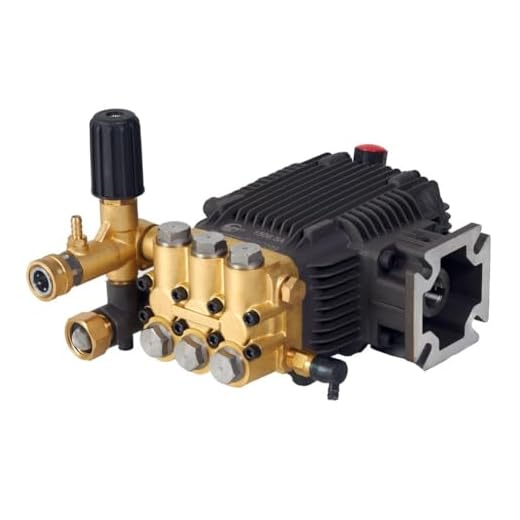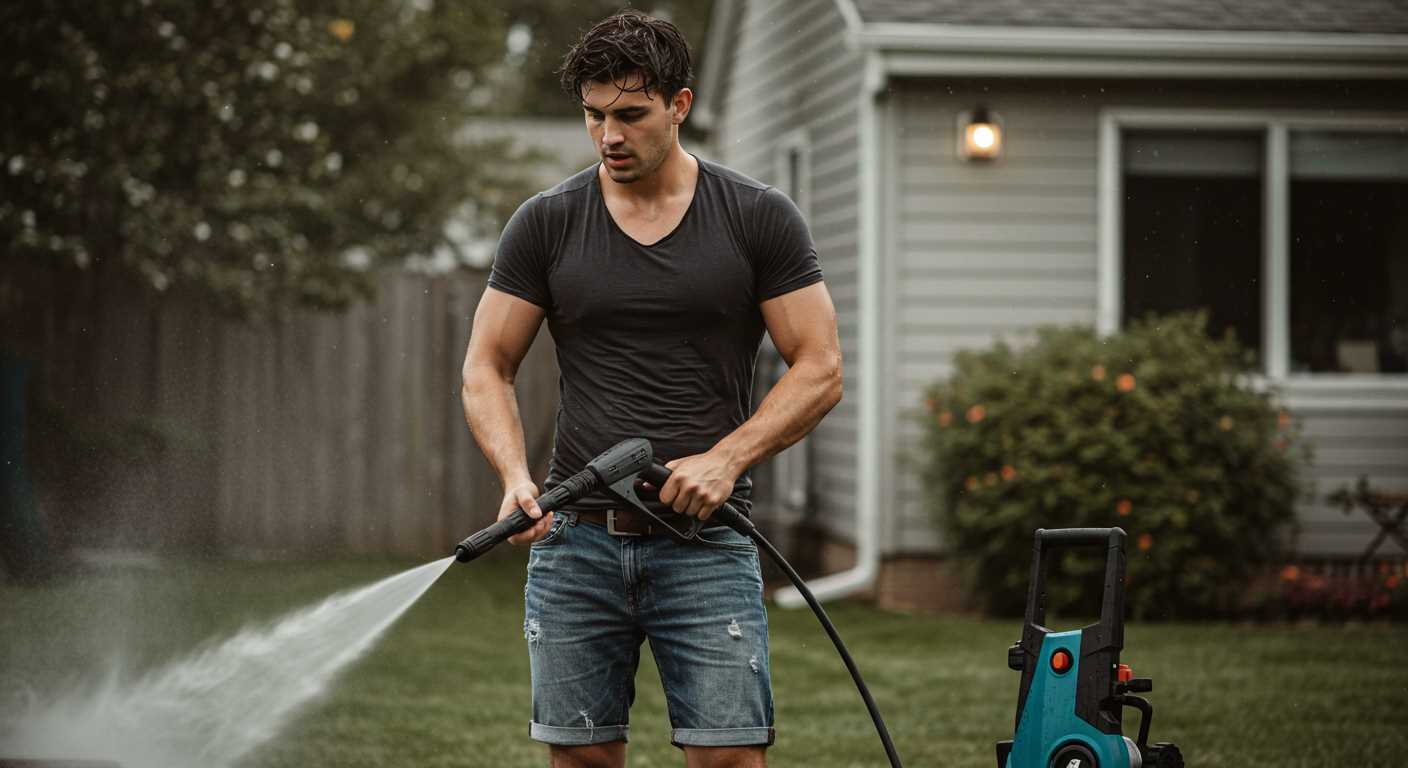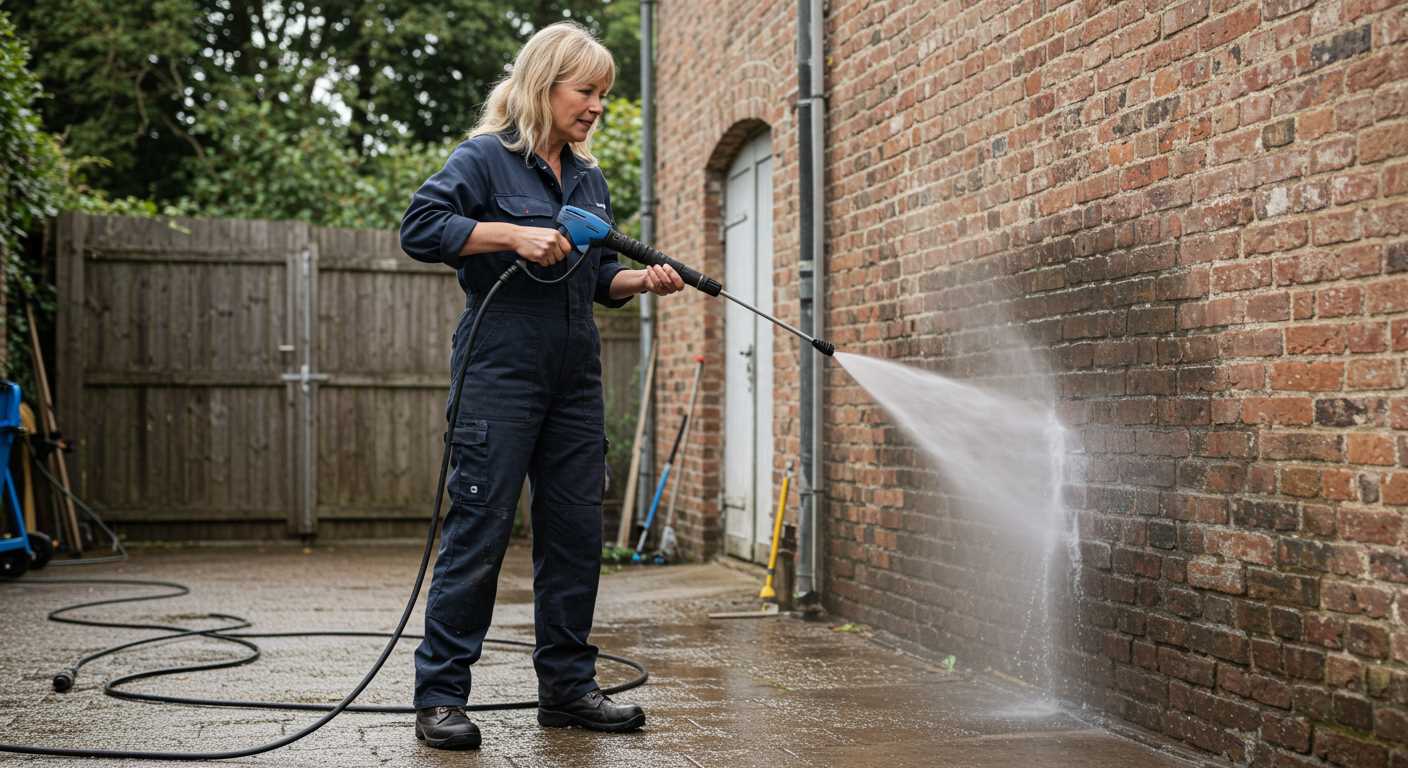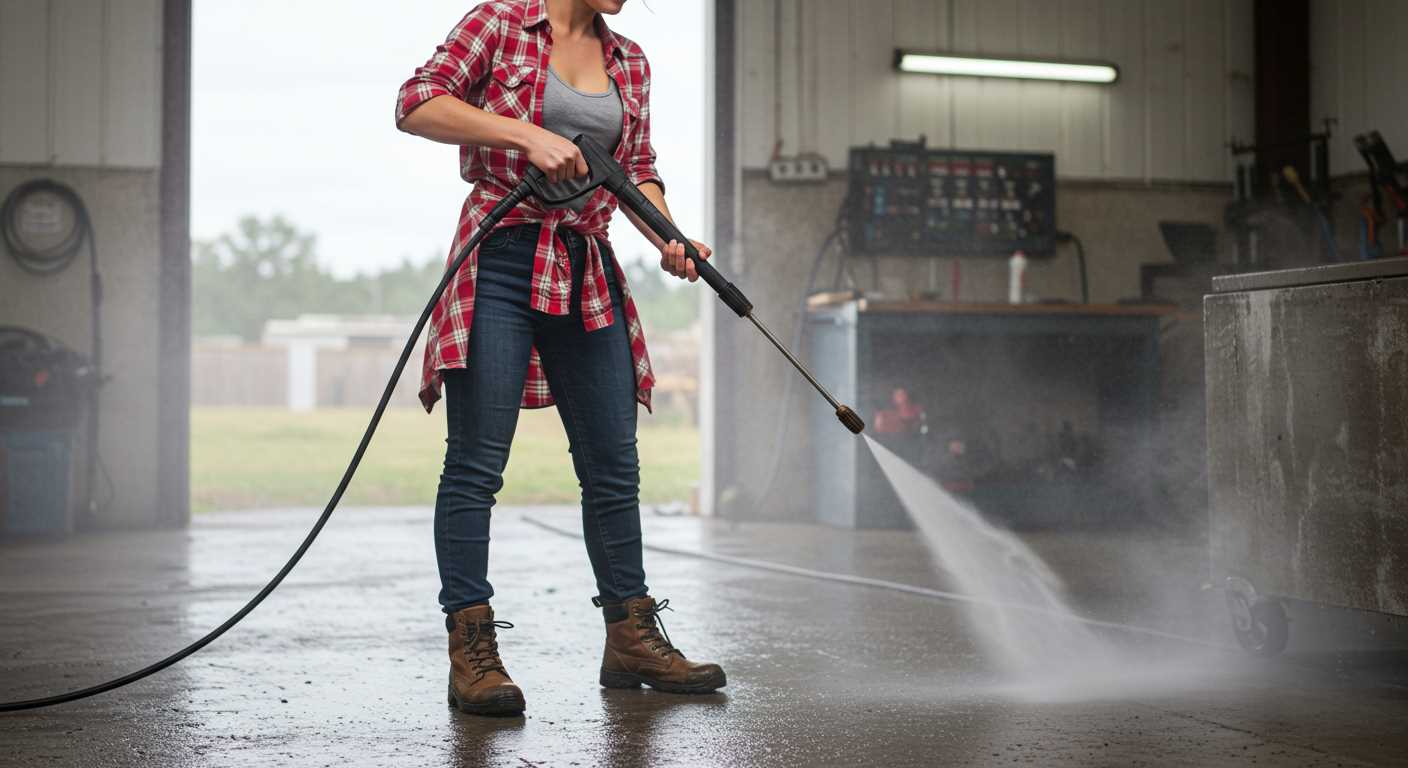



To evaluate the effectiveness of high-pressure cleaners, one must focus on key specifications: PSI (pounds per square inch) and GPM (gallons per minute). A unit with at least 2000 PSI provides sufficient force for tough cleaning tasks like removing grime and oil stains, while a GPM of 1.5 or higher ensures that water flows efficiently, washing away debris effectively.
Only by balancing these two metrics can one truly appreciate the cleaning capabilities. For instance, a machine offering 3000 PSI paired with only 1.2 GPM may have immense pressure but will struggle with delivering water rapidly, impacting overall performance. Seek models that optimise both measures for a more thorough clean.
The engine type is another determinant. Electric motors, while quieter and more compact, may not deliver the same performance levels as their gas-powered counterparts. Gas engines typically generate higher pressures, making them suitable for large-scale cleaning tasks, such as commercial applications or extensive home projects.
Durability and build quality are equally significant. Reliable materials, such as brass fittings and corrosion-resistant pumps, enhance longevity and performance, minimising maintenance issues over time. Consider brands with a reputation for quality to ensure that your investment lasts.
Understanding PSI and its Impact on Cleaning

PSI, or pounds per square inch, plays a pivotal role in determining the effectiveness of the cleaning process. A higher PSI translates to a more intense stream of water, allowing for the removal of stubborn grime, grease, and dirt from various surfaces.
Key Factors Affecting Cleaning Efficiency
- Surface Type: Different materials react variably to high-pressure cleaning. For example, a concrete driveway can withstand higher PSI levels without damage, while painted surfaces may require lower settings to avoid peeling or chipping.
- Cleaning Task: Identify the objective of your cleaning. For heavy-duty tasks like removing oil stains, a unit with a PSI between 3000 and 4000 is suitable. For lighter duties, a range of 1300 to 1900 is preferable.
- Distance from Surface: The distance the nozzle is held from the target area also affects performance. Maintaining an appropriate distance ensures the water hits the surface with the desired intensity without causing harm.
Optimising Performance with Proper Settings
To achieve the best results, it’s crucial to adjust the nozzle and pressure settings based on your cleaning task. Here are several recommendations:
- For delicate surfaces, such as wooden decks, utilise a lower PSI (around 1500) with a wide-angle nozzle to spread the force gently.
- For cars, set the PSI between 1300 and 1900, employing a fan-shaped nozzle to prevent damage to the paint.
- Utilise detergent in conjunction with higher PSI to enhance the effectiveness of your cleaning solution on tough stains.
A thorough understanding of PSI empowers users to select the correct equipment and settings, leading to efficient and safe cleaning outcomes. Choose wisely, and tailor your approach for each unique task for optimal results.
The Role of GPM in Pressure Washer Performance
Focusing on the gallons per minute (GPM) rating is essential when assessing cleaning appliances. A higher GPM indicates a machine that delivers more water, facilitating efficient dirt removal. This metric directly influences how quickly and effectively an operator can address various cleaning tasks.
Impact of GPM on Cleaning Efficiency

During my time in the industry, I found that machines with a GPM of 2.5 or above significantly enhance performance for residential projects. For instance, appliances rated at 3 GPM can remove grime from driveways and sidewalks faster than those with lower outputs. More water flow not only speeds up the cleaning job but also helps to rinse away soap and cleaning solution more effectively, leading to a cleaner finish.
| GPM Rating | Typical Uses |
|---|---|
| 1.5 – 2.0 | Small decks, outdoor furniture, and vehicles |
| 2.0 – 2.5 | Patios, siding, and light concrete |
| 2.5 – 3.0 | Driveways, sidewalks, and heavy dirt |
| 3.0+ | Professional use, large surfaces, and industrial applications |
Choosing the Right GPM for Your Needs
Selecting a machine should be tailored to your specific cleaning requirements. For residential tasks, aim for 2.0 to 2.5 GPM to balance effectiveness and water consumption. If the goal is commercial or heavy-duty cleaning, models with 3 GPM and above will deliver superior performance. Always consider the surfaces you’ll be cleaning and the level of soiling to choose the right unit that optimises your effort and resources.
How Motor Type Influences Pressure Cleaner Strength
The selection of motor type directly affects the performance and efficiency of cleaning equipment. Electric motors are generally quieter, lighter, and ideal for residential usage, generating sufficient force for smaller tasks. However, they often fall short in heavy-duty situations compared to their gas counterparts.
Gas engines deliver higher torque and can sustain extended usage without overheating, making them excellent for demanding chores such as industrial cleaning or large-scale outdoor projects. If you require robust performance and the ability to tackle stubborn grime, consider models equipped with gas engines.
The motor’s wattage or horsepower also determines the unit’s output capabilities. Higher wattage translates typically into greater pressure and flow rates, meaning a more vigorous cleaning action. I recommend models with at least 2000 watts for more versatile functionality, especially when dealing with tough surfaces or significant dirt accumulation.
Additionally, brushless motors have emerged as a beneficial option. They offer increased durability and energy efficiency, resulting in longer lifespans and less maintenance over time. This choice can be advantageous for both residential users and professionals seeking reliability without regular upkeep.
When choosing your equipment, assess the type of projects you plan to tackle and select a motor type that aligns with your cleaning ambitions. Understanding the specific requirements will influence not just performance but also the satisfaction with the results.
The Importance of Nozzle Selection for Maximum Power
Select the correct nozzle for specific tasks to optimise cleaning results. Different nozzles alter the spray angle and pressure, impacting how effectively dirt and grime are removed. A narrow nozzle concentrates force on a small area for tough stains, while wider angles disperse water for gentler applications.
Using a zero-degree nozzle provides the highest impact for stripping paint or tackling stubborn substances, but always maintain a safe distance to prevent surface damage. A 15-degree option is effective for a variety of hard surfaces, while a 25-degree nozzle is ideal for softer materials like vehicles and delicate outdoor furniture.
The 40-degree nozzle suits large areas and light cleaning, ideal for washing down surfaces without excessive force. Switching between nozzles allows for tailored cleaning depending on the surface and level of dirt present, maximising efficiency.
Also consider nozzle material; brass and stainless steel offer durability, whereas plastic is lighter and may suffice for lighter tasks. A good practice is to always check compatibility with your device to prevent any operational issues.
Experimenting with different nozzles can yield insights on what works best for specific projects, enhancing cleaning outcomes and extending the life of surfaces treated. Proper nozzle selection is key to achieving superb results and maintaining equipment longevity.
Electric vs Gas Pressure Cleaners: Which is Stronger?
In my experience, gas-operated models typically outperform electric units when it comes to sheer force and heavy-duty tasks. Gas machines generally deliver higher PSI and GPM ratings, making them a better choice for tackling tough grime on large areas and stubborn surfaces.
However, there are distinctions within each category that can influence overall effectiveness. Electric systems are quieter, lighter, and easier to handle, making them suitable for residential use and light-duty projects. Similarly, they work well for tasks like washing cars, patios, and delicate surfaces.
Performance Comparison
For practical applications, I recommend gas-powered cleaners for jobs requiring high pressure, such as stripping paint from surfaces or cleaning industrial machinery. Models can often exceed 3000 PSI, while electric counterparts usually max out around 2000 to 2500 PSI. This disparity means that for heavy-duty cleaning, gas machines provide more robust results.
On the other hand, while electric versions may fall short in extreme scenarios, advancements have closed the performance gap significantly. Some high-end electric units offer impressive specs and are capable of handling moderate tasks with reasonable efficiency. If you’re limited by storage or noise concerns, these options can be remarkably effective.
Cost and Maintenance Factors

When considering the economics, electric machines typically require less maintenance and have lower operating costs due to the absence of fuels and oil changes. In contrast, gas models might be more expensive to maintain in the long run due to their complexity and fuel needs.
Ultimately, the decision between the two types hinges on your specific cleaning needs and preferences. Assess the material you’ll be cleaning and the frequency of use before making a choice between these two powerful cleaning tools.
Maintenance Tips to Sustain Pressure Washer Power
Regular maintenance is key to keeping your equipment operating at peak effectiveness. Here are specific steps I recommend to prolong the life and performance of your machine:
- Clean the Filter: Regularly remove and clean the water filter. A clogged filter restricts water flow, reducing efficiency.
- Check Hoses and Connections: Inspect hoses for cracks or signs of wear. Secure all connections to prevent leaks, which could diminish the output.
- Monitor Pump Oil: For gas-powered units, ensure the pump oil level is correct. Change the oil according to the manufacturer’s guidelines to ensure smooth operation.
- Check the Nozzles: Inspect nozzles for blockages and wear. A damaged nozzle can affect spray patterns and cleaning efficiency. Replace if needed.
- Winterizing: If you live in a colder climate, properly winterise your machine. This includes draining fluids and using antifreeze to prevent freezing damage.
- Store Properly: Keep your device in a dry location to avoid rust and corrosion. Protecting it from the elements will extend its lifespan.
- Regular Testing: Perform tests on your equipment periodically to ensure it operates at optimal levels. This can include pressure tests and flow rate checks.
By following these precise maintenance suggestions, you will help ensure consistent high performance and longevity of your equipment throughout its life cycle.
FAQ:
What factors contribute to the power of a pressure washer?
The power of a pressure washer is primarily determined by its pressure output, measured in pounds per square inch (PSI), and its water flow rate, indicated in gallons per minute (GPM). A higher PSI means the machine can deliver a stronger water jet, making it more effective for tough cleaning tasks like removing stubborn dirt or graffiti. Meanwhile, a higher GPM allows for faster cleaning as more water is used in the process. The combination of these two metrics is critical: a washer with 3000 PSI and 2.5 GPM will clean differently than one with 2000 PSI and 3.5 GPM, even if they are both powerful in their own right. Furthermore, the type of motor (electric vs. gas), the design of the pump, and the nozzle type also play roles in enhancing the overall performance and versatility of the pressure washer.
How does the design of a pressure washer affect its performance?
The design of a pressure washer significantly influences its performance and usability. Key design aspects include the quality and type of the pump, hose length, and overall build quality. A triplex pump, for instance, usually offers better performance than a axial pump, providing higher durability and efficiency. Additionally, longer hoses allow for greater reach, reducing the need to move the unit frequently, while lightweight materials make the pressure washer easier to handle and transport. Design features such as adjustable nozzles enhance versatility, allowing users to adjust spray patterns according to specific cleaning tasks, from gentle rinsing to high-pressure blasting. This thoughtful design not only maximises cleaning effectiveness but also improves user comfort and safety.










